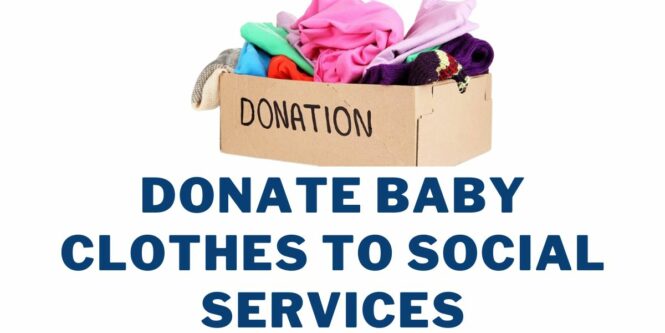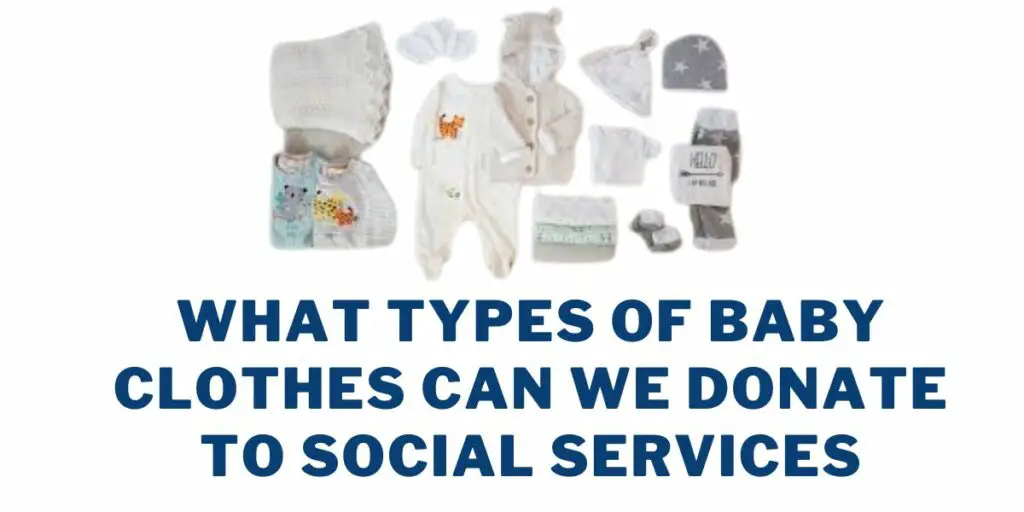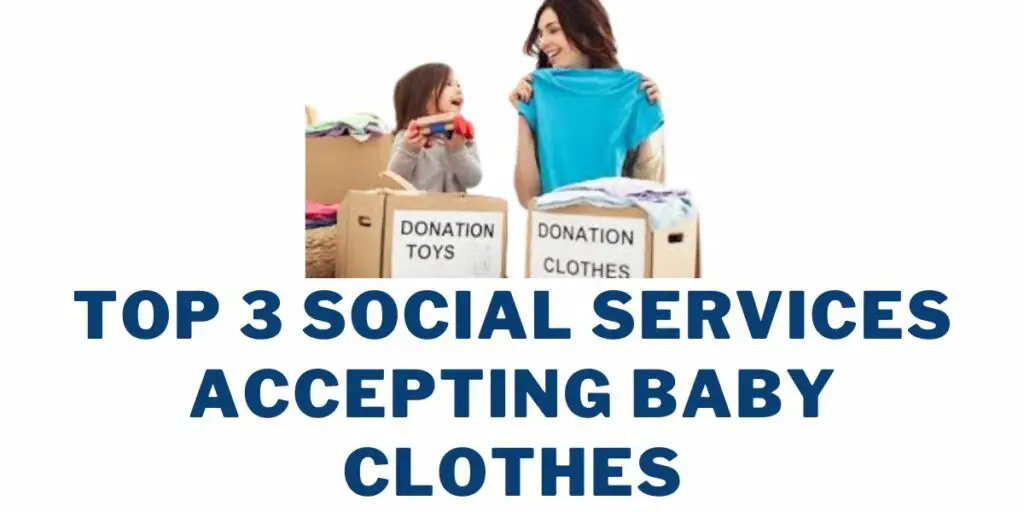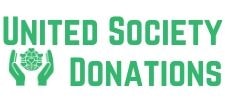
My little one went from tiny peanut to chubby crawler in what felt like five minutes flat.
However, Sarah, my neighbor, told me about social services where I could donate those clothes, bringing a lot of sunshine to other needy families.
Donating them is easier than teaching your toddler the difference between “truck” and “excavator.”
In this post, I explain how to Donate Baby Clothes to Social Services and list the top 5 places that accept them.
What Types of Baby Clothes Can We Donate to Social Services?

These are the types of baby clothes that we can donate to Social Services:
- Good condition: Clothes should be clean, stain free, with no rips or tears.
- Seasonal suitability: Focus on clothes appropriate for the current season or the coming one.
- All sizes: From newborn to toddler, every stage matters.
- Beyond clothes: Consider toys, bibs, and other baby essentials.
You can also donate Coats to Homeless, while you are clearing out your wardrobe.
Top 5 Places to Donate Baby Clothes to Social Services
These are the top 5 places to donate baby clothes to social services:
1. Local Social Service Agencies
These agencies work to support families in need and can help distribute donated baby clothes to those who need them.
Examples include the Department of Human Services and community based organizations that assist such as food banks, homeless shelters, and family support centers.
2. Women’s Shelters and Crisis Centers
These facilities often provide temporary housing and support for young mothers and families facing challenging situations.
Donating baby clothes to women’s shelters can ensure that these mothers have access to essential items for their infants.
Examples include organizations like the YWCA or domestic violence shelters.
3. Community centers and family resource centers
These centers often organize events or clothing drives to support families in need.
Baby clothes donations made to community centers can reach a wide range of families who rely on these resources.
Examples include community centers that offer parenting classes, after-school programs, or family support services.
4. National Charities
National charities with established networks can efficiently distribute donated baby clothes across the country.
Organizations such as Baby2Baby and Salvation Army have the infrastructure to collect, sort, and distribute items to needy families, including baby clothes.
5. Hospital Neonatal Units
Babies born prematurely or with medical complications often require specialized clothing.
Donating baby clothes to hospital neonatal units ensures that these fragile newborns have appropriate attire during their hospital stay.
Examples include donating to hospitals with neonatal intensive care units or newborn nurseries.
Explore my guide on Where To Donate Old Blankets if you want to give away blankets along with your baby’s clothes.
How to Donate Baby Clothes to Social Services
Follow these steps to donate baby clothes to social services:
- Sort and gather baby clothes: Sort out the items that are in good condition, gently used, and still appropriate for a baby in need. Remove any clothes that are stained, torn, or extremely worn out.
- Launder and clean the clothes: Make sure to wash all the clothes you intend to donate. This ensures they are clean and ready for use by another baby.
- Research local social service organizations: Look for local social service organizations or charities that accept donations of baby clothes. You can search online or contact your local government office for recommendations.
- Contact the chosen organization: Reach out to the social service organization of your choice to inquire about their donation process.
- Arrange drop off or pick up: Make arrangements for dropping off your donation. Some organizations may have specific drop off locations or scheduled donation drives, while others may offer pick up services for large donations.
- Prepare the donation: Consider organizing them by size or type (e.g., onesies, pants, sleepwear) to make it easier for the organization staff to sort and distribute them.
- Complete necessary paperwork: Some organizations may require you to fill out a donation form, so be prepared to provide basic information such as your name, contact details, and a brief description of the donation.
- Deliver the donation: On the agreed upon date and time, deliver the donated baby clothes to the designated drop off location or wait for the scheduled pick up.
Did you know you could also donate your undergarments? Check out my Donate Underwear to Homeless Shelter post to learn how.
How to Prepare Baby Clothes for Donation
Follow these steps to prepare baby clothes for donation:
- Sort and organize: Separate clothes by size, season, and type (onesies, pants, etc.).
- Wash and sanitize: Clean clothes for hygiene and freshness.
- Repair minor tears: Small fixes can extend the life of clothes.
- Fold or pack neatly: Make sorting and distribution easier for recipients.
- Label boxes or bags: Specify sizes and contents for better organization.
Top 3 Social Services Accepting Baby Clothes

These are the top 3 social services accepting baby clothes:
1. Baby2Baby
This non profit provides critical supplies, including clothing, to low income children under 12.
They have a large network of partner organizations across the country, ensuring your donation reaches families in need.
2. Salvation Army
With thrift stores and shelters nationwide, the Salvation Army accepts and distributes a wide range of donations, including baby clothes. Their focus on community outreach makes them a reliable choice.
If you’re looking for a comparison of Salvation Army and Goodwill prices, check out my post on Salvation Army vs Goodwill Prices for a detailed analysis to make informed choices.
3. National Network to End Domestic Violence
The National Network to End Domestic Violence supports shelters for families fleeing domestic violence. While clothing needs vary, they often require newborn and toddler clothes. Their work is vital and your contribution can offer essential assistance to families rebuilding their lives.
How to Find Centers to Donate Baby Clothes to Social Services Near Me
This table contains the social services accepting baby clothes with their locations/addresses:
| Organization Name | Location/Address | Website/Contact Information | Types of Clothes Accepted |
|---|---|---|---|
| Baby2Baby: National network with partner organizations across the US | Visit their website for drop off locations near you | https://baby2baby.org/ | Varies by shelter, often with high need for newborn and toddler clothes. |
| Salvation Army: 4,500+ thrift stores and shelters nationwide | Find your nearest location https://easternusa.salvationarmy.org/eastern territory/ | https://easternusa.salvationarmy.org/eastern territory/ | All sizes and types, newborns to adults |
| Goodwill: 3,300+ stores in the US | Find your local Goodwill https://shopgoodwill.com/home | https://shopgoodwill.com/home | All sizes and types, newborns to adults |
| National Network to End Domestic Violence: Shelters & programs affiliated with the network | Find a shelter near you https://nnedv.org/ | https://nnedv.org/ | All sizes and types, newborns to adults (Some shelters may have specific needs for children’s clothing). |
| Catholic Charities: Local chapters operating shelters & programs | Find your local chapter https://www.catholiccharitiesusa.org/ | https://www.catholiccharitiesusa.org/ | Varies by shelter, often with high need for newborn and toddler clothes. |
If you have a gas cooker to spare, consider contributing to charitable causes. Find out how to Donate Gas Cooker to Charity and make a positive impact on individuals and families in need.
Can You Give Baby Clothes to Charity?
Many charities gladly accept gently used baby clothes. Research local thrift stores, shelters, or national organizations to find the perfect fit.
Benefits of Donating Baby Clothes to Social Services
These are the benefits of donating baby clothes to social services:
- Directly Impacting Families in Need: Social services often work directly with families experiencing poverty, homelessness, or other hardships.
- Supporting Vulnerable Children: Your contribution can ensure children have proper clothing for warmth, comfort, and even dignity, promoting their well being and development.
- Efficient Distribution and Recycling: Social services ensure efficiency, prevent wasted resources, and guarantee your clothes reach families quickly and appropriately.
- Community Partnership and Empowerment: Donating to social services strengthens your community by supporting organizations working to address local needs.
- Beyond Clothes, a Stepping Stone: Your donated clothes can represent hope, support, and a reminder that they’re not alone.
FAQs on Donate Baby Clothes to Social Services
These are the frequently asked questions on Donate Baby Clothes to Social Services:
Why should I donate baby clothes to social services specifically?
While other donation channels have their merits, Social services offer a targeted and impactful way to make a difference for families and children in need. Every item you donate can become a lifeline of support, warmth, and a helping hand on their path to a better tomorrow.
Can I donate baby clothes that are out of season or no longer in fashion?
Although seasonal clothes are ideal, basic items like onesies and sleepers are always needed. Unfashionable clothes in good condition can also be appreciated by families who prioritize practicality over trends.
Are baby clothes donations tax deductible?
Check with the organization you donate to. Certain charities and qualified thrift stores issue tax receipts for eligible donations.
Conclusion
Donating baby clothes is a simple act with a lasting impact. You’ll free up space, help families in need, and feel the satisfaction of giving back.
So, gather those outgrown garments, follow these steps, and watch your tiny threads weave a brighter future for others.
